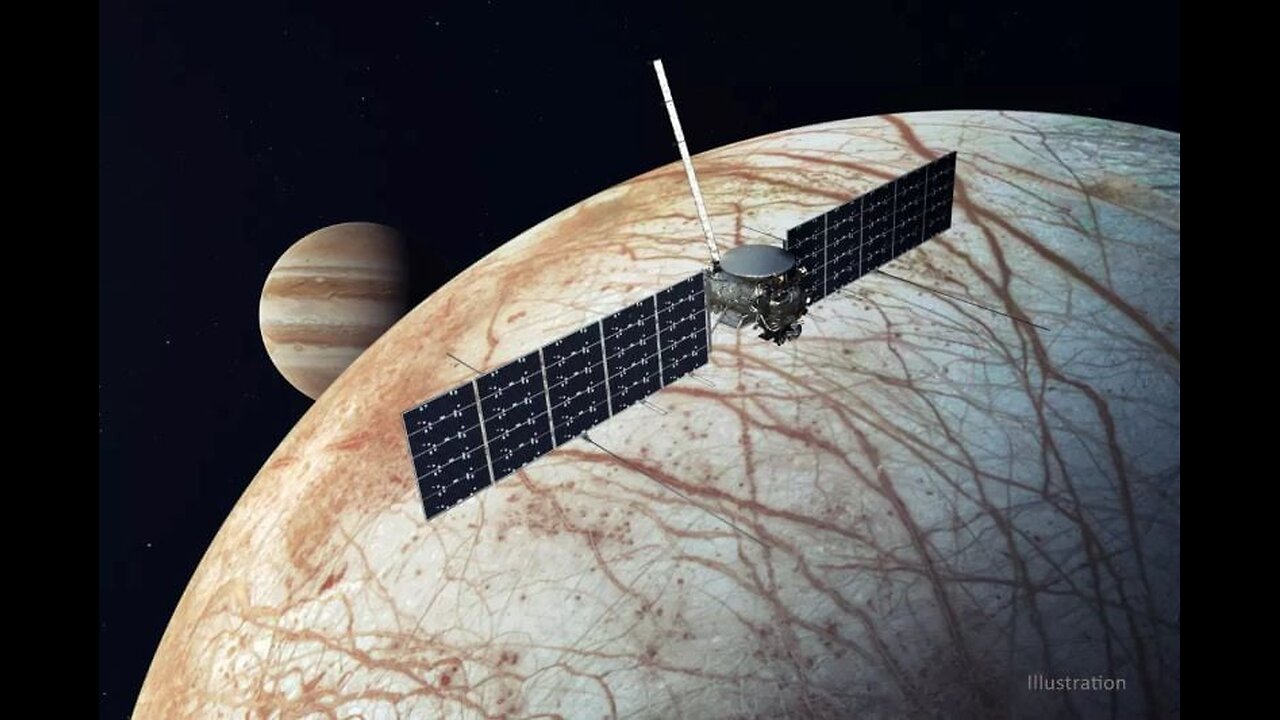Premium Only Content

NASA's Europa Clipper set for journey to Jupiter's icy moon aboard SpaceX Falcon rocket
The Europa Clipper is now on its 1.8-billion-mile, five-and-a-half-year journey to the solar system's largest planet. “NASA has officially retired a tremendous amount of risk on the mission,” said Jordan Evans, Europa Clipper project manager at NASA’s Jet Propulsion Laboratory.
Clipper’s journey will not be direct. It will receive a gravity assist by sling-shotting around Mars early next year, then boomeranging back around Earth in late 2026 before heading towards the gas giant and its dynamic moon. The spacecraft is scheduled to arrive in 2030 and will gather data for more than four years. At the end of the mission, Clipper will fly itself into one of Jupiter’s rocky moons to prevent contaminating Europa.
Originally set for October 10, the launch was postponed as Clipper spent the day secured in SpaceX’s hangar to ride out Hurricane Milton. On Monday morning, the skies over Florida’s space coast were clear, with only a few wispy clouds.
Scientists have long advocated for a Europa mission, particularly since NASA’s Galileo probe suggested that the moon likely possesses a subterranean global ocean, heated by Jupiter’s gravitational forces. “Scientists have urged NASA to search for signs of life near Jupiter. Now it’s happening,” added Evans.
With water, a heat energy source, and potentially organic compounds, Europa is considered a potential habitat for alien life. As Clipper orbits Jupiter, it will perform dozens of flybys of Europa, using its array of scientific instruments to study the moon’s subterranean ocean dynamics and search for organic compounds, which could indicate the presence of life.
The $5 billion Europa Clipper mission was designed and built by NASA’s Jet Propulsion Laboratory in La Cañada Flintridge, making it the largest planetary probe ever constructed by the agency.
SpaceX employed its Falcon Heavy rocket, a variant of the Falcon 9 with an extra booster strapped to each side, to launch the spacecraft. While SpaceX typically attempts to recover their boosters, this time they let them fall into the ocean, expending all their propellant to ensure Clipper's escape from Earth’s gravity. However, the fairings protecting the spacecraft during launch will be recovered.
“The community is really fortunate to have new rockets with these heavy-lift capabilities available to them,” said Matthew Shindell, planetary science and exploration curator at the Smithsonian National Air and Space Museum. “If you were trying to launch a mission like this a decade ago, you couldn’t do it.”
#NASA #Space #NASAmission #EurpaCipper #EuropaClipperlaunced
-
 1:55:20
1:55:20
The White House
4 hours agoPresident Trump Participates in the Memorial Service for Charlie Kirk
36.9K43 -
 UPCOMING
UPCOMING
Sarah Westall
3 hours agoDomestic Terror Operation: Death Threats, Smear Campaigns, Gang Stalking w/ Journalist Sarah Fields
788 -
 DVR
DVR
Nerdrotic
3 hours ago $4.12 earnedGobekli Tepe Discovery and "Reconstruction" | Forbidden Frontier #118
27.3K2 -
 29:07
29:07
Tactical Advisor
3 hours agoATF Changes Ruling on SBR & Tacpack unboxing | Vault Room Live Stream 039
28.2K9 -
 22:09
22:09
Tundra Tactical
7 hours ago $0.10 earnedStupid Gun Myths & Questions Ep. 1 🛑NEW SERISE!!🛑
2971 -
 2:00
2:00
From Zero → Viral with AI
9 hours agoAre You Being Left Behind? Why AI Marketing is No Longer Optional
7 -
 9:10
9:10
BlackDiamondGunsandGear
6 hours agoI Finally Got it! / Now i need to BUILD IT!
2071 -
 9:44
9:44
Millionaire Mentor
3 days agoCharlie Kirk Brings Woke Student To STUTTERING Over White Privilege Lies
1535 -
 24:12
24:12
MudandMunitions
7 hours agoOff-Roading with NYPrepper Wild Elk & PA’s Most Remote Backroads
23 -
 LIVE
LIVE
Bannons War Room
7 months agoWarRoom Live
5,284 watching